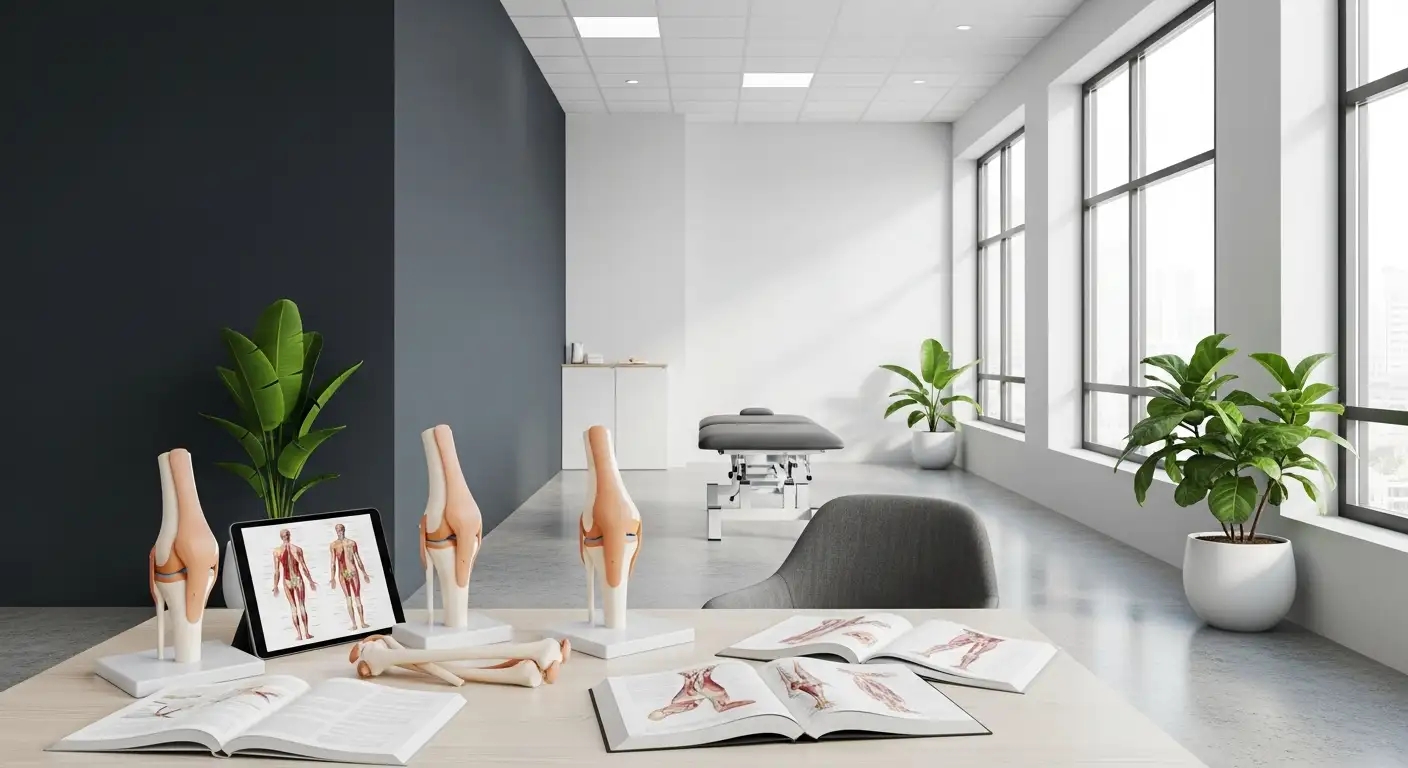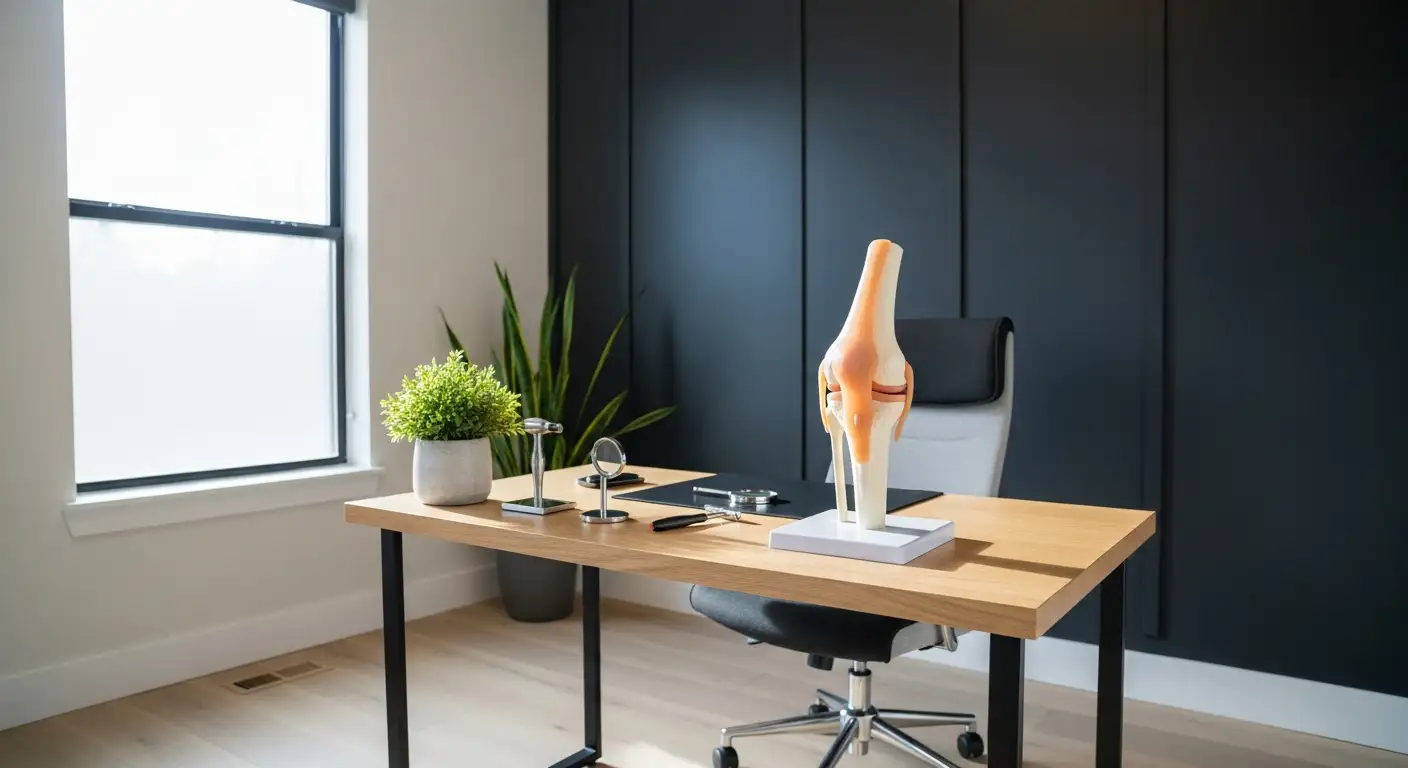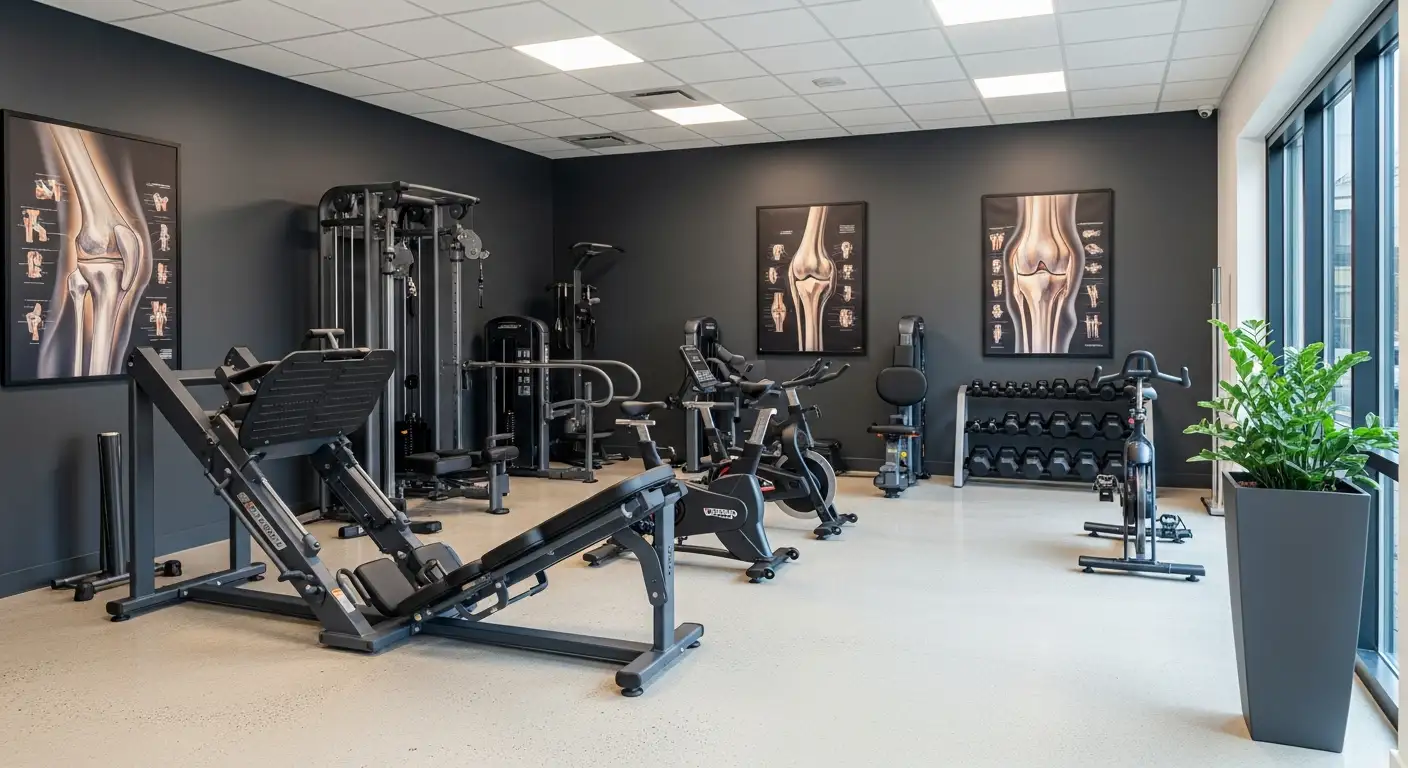Understanding Inside Knee Pain
Inside knee pain when straightening the leg is a common ailment that can stem from various causes. Understanding the anatomy of the knee and common symptoms and causes can help individuals better manage and treat this condition.
Anatomy of the Knee
The knee is a complex joint that connects the thigh bone (femur) to the shin bone (tibia). It includes several key structures, such as the meniscus (a cushion of cartilage), ligaments (which connect bones), tendons (which connect muscle to bone), and bursa (fluid-filled sacs that help reduce friction). Any of these structures can be affected by injury or disease, potentially leading to inside knee pain when straightening the leg.

Symptoms and Causes
Inner knee pain when straightening the leg can result from a variety of conditions, including a torn meniscus, osteoarthritis, patellar tendonitis, and pes anserine bursitis. The symptoms may worsen with certain movements such as squatting, walking up or down stairs, standing after sitting for a while, or prolonged kneeling [1].
More specifically, a meniscus tear may cause a clicking or popping sound, swelling, stiffness, and limited range of motion. Severe tears might require surgery to repair. A ligament injury can lead to instability, swelling, and a feeling of the knee giving out, with physical therapy and sometimes surgery being necessary for recovery [1].
Tendonitis, or inflammation of the tendons, in the inner knee can also cause pain when straightening the leg, with symptoms such as swelling, warmth, and tenderness in the affected area. Bursitis in the inner knee, an inflammation of the bursa sac, can result in pain, swelling, and tenderness.
Other conditions that might cause inner knee pain include patellofemoral pain syndrome, medial plica syndrome, medial ligament injuries, medial cartilage tear, and medial meniscus tear. The pain might be accompanied by swelling and a grinding sensation when the knee moves.
Identifying the specific cause of inside knee pain when straightening the leg is crucial in determining the appropriate treatment path. If the pain persists, it's recommended to seek medical advice [2].
Common Conditions Causing Pain
When experiencing inside knee pain while extending the leg, it's crucial to understand the potential causes. Several common conditions could be the root cause of this pain, including meniscal tears, ligament injuries, and osteoarthritis. Let's explore these further.
Meniscal Tears
A meniscal tear is a common knee injury that can cause inside knee pain when straightening the leg. The meniscus is a piece of cartilage that provides a cushion between your thighbone and shinbone. A tear in the medial meniscus, located on the inside of the knee, can cause pain, swelling, and difficulty in straightening the leg.
It's essential to seek medical attention if you suspect a meniscal tear, as it may not heal without treatment. Depending on the severity of the tear, treatment can range from rest and physiotherapy to surgical repair.
Ligament Injuries
Ligaments are tough, flexible tissues that connect your bones. In the knee, several ligaments can be injured, leading to inside knee pain when extending the leg. These injuries can occur due to sudden twists, direct impact, or overuse, and can range from mild sprains to complete tears.
The most common ligament injuries include the anterior cruciate ligament (ACL), posterior cruciate ligament (PCL), and medial collateral ligament (MCL). Among these, an injury to the MCL can often cause pain on the inside of the knee.
Osteoarthritis
Osteoarthritis is a degenerative joint disease and a common cause of knee pain. It occurs when the cartilage that cushions your knee joint wears down over time. This wear and tear can lead to pain, stiffness, and swelling, often worsening when you straighten your leg [5].
While there's no cure for osteoarthritis, many treatments can help manage symptoms and slow the progression of the disease. These include lifestyle modifications, physical therapy, medication, and in some cases, surgery.
Understanding these common conditions can help you better manage inside knee pain when straightening the leg. If you're experiencing persistent knee pain, it's important to seek medical attention to diagnose the underlying issue and start an appropriate treatment plan.
Diagnosis of Inside Knee Pain
To accurately diagnose the cause of inside knee pain when straightening the leg, healthcare professionals utilize a variety of techniques. These usually include a physical examination, imaging tests such as X-rays or MRI, and in some cases, an injection test.
Physical Examination
The first step in diagnosing inner knee pain often involves a physical examination. During this examination, a healthcare professional may ask about the patient's symptoms, medical history, and any incidents that might have led to the pain.
They may also examine the affected knee, checking for signs of swelling, redness, or warmth, and assess the knee's range of motion. The patient may be asked to perform certain movements to help the healthcare professional assess the knee's functionality and identify any movements that cause pain Healthline.
Imaging Techniques
If the cause of the pain is not immediately apparent from the physical examination, imaging tests may be ordered. These can include X-rays, which can help identify bone fractures or joint abnormalities, and MRI scans, which provide a more detailed image of the knee's soft tissues and can help identify issues such as torn ligaments or meniscal injuries Mayo Clinic.
Imaging tests are crucial in identifying less apparent causes of inside knee pain when straightening the leg, and can provide valuable information to guide the treatment plan.
Injection Test
In some cases, an injection test may be performed to confirm the diagnosis. This involves injecting a local anesthetic into the knee joint. If the anesthetic relieves the pain, it can confirm that the issue is localized within the knee joint. An injection test can be particularly useful if imaging tests do not reveal a clear cause of the pain Bupa UK.
Persistent inside knee pain when straightening the leg should not be ignored. It is recommended to seek medical attention for a proper evaluation and to prevent potential worsening of the condition Medical News Today. A timely diagnosis can help ensure the appropriate treatment is started as soon as possible, improving the chances of a full recovery.
Treatment Options
When dealing with inside knee pain when straightening the leg, it's important to consider various non-surgical treatment options. These can range from home remedies to controlled physical therapy and medical interventions. Remember, it's always crucial to consult a healthcare provider before starting any treatment regimen.
Home Remedies and RICE Method
One recommended approach for managing knee pain at home is the RICE method, which stands for Rest, Ice, Compression, and Elevation.
- Rest: Allow the knee to rest, avoiding activities that might exacerbate the pain.
- Ice: Apply ice to the knee to reduce inflammation and numb the pain.
- Compression: Use a compression bandage to help reduce swelling.
- Elevation: Elevate the knee above the heart level to help reduce swelling and promote healing.
These steps can offer temporary relief from knee pain and are often an effective first response to acute knee injuries.
Physical Therapy and Exercises
Physical therapy is another essential aspect of treating inside knee pain. It involves exercises designed to strengthen the muscles around the knee and improve joint stability, which can help relieve pain. It can also improve flexibility and range of motion, further reducing the discomfort associated with straightening the leg [3].
Exercise programs should be tailored to the individual's specific needs and capabilities, taking into account the cause and severity of the knee pain. Therefore, it's crucial to consult a healthcare provider or a physical therapist before starting any exercise program for knee pain.
Medications and Injections
Depending on the cause and severity of the knee pain, various medications may be recommended. These can include over-the-counter pain relievers, non-steroidal anti-inflammatory drugs (NSAIDs), or prescription medications.
In addition to oral medications, corticosteroid injections may be administered directly into the knee joint to reduce inflammation and ease pain. However, these injections should be administered by a healthcare professional and are typically used when other treatment options have not provided adequate relief [1].
It's essential to remember that while these treatments can help manage pain and improve knee function, they do not cure the underlying condition causing the pain. Therefore, it's crucial to consult a healthcare provider to determine the best treatment plan for your specific situation.
Surgical Interventions
In some cases, if the inside knee pain when straightening the leg is persistent and severe, surgical interventions may be considered. These are generally opted for when non-surgical treatment options have failed to provide relief. The type of surgery recommended will depend on the underlying cause of the pain.
Arthroscopic Surgery
Arthroscopic surgery is a minimally invasive procedure that can be used to treat joint damage, including arthritis, which can cause inside knee pain when straightening the leg. During this procedure, a small camera and special tools are inserted through small incisions to trim, smooth, or repair the articular cartilage.
In the case of meniscal tears, a common cause of knee pain, the torn section of the meniscus is often removed or repaired using arthroscopic surgery. This is done to alleviate the pain and prevent further damage to the knee joint Mayo Clinic.
Bone Grafts and Repairs
When there is extensive damage inside the knee, bone grafts may be necessary. These grafts help regenerate new bone or cartilage, thereby repairing the damage that could be contributing to the pain experienced when straightening the leg. Bone grafts are complex procedures and are typically considered when other treatment options have not provided adequate relief Mayo Clinic.
Realignment Procedures
Conditions like patellar tracking disorder, which can cause pain on the inside of the knee when straightening the leg, may require other surgical procedures such as lateral release or patellar realignment. These procedures help to correct the alignment of the kneecap, reducing the strain on the knee joint and alleviating the associated pain Mayo Clinic.
Each of these surgical interventions has its benefits and risks. Therefore, the choice of procedure will depend on the individual's specific condition, overall health, and lifestyle. It's crucial to discuss these factors with your healthcare provider to determine the most suitable treatment option for your inside knee pain when straightening the leg.
References
[1]: https://www.healthline.com/health/inner-knee-pain
[2]: https://www.bupa.co.uk/health-information/knee-pain/inner-knee-pain
[3]: https://www.mayoclinic.org/diseases-conditions/knee-pain/diagnosis-treatment/drc-20350855
[4]: https://www.medicalnewstoday.com/articles/321065
[5]: https://my.clevelandclinic.org/health/symptoms/21207-knee-pain





